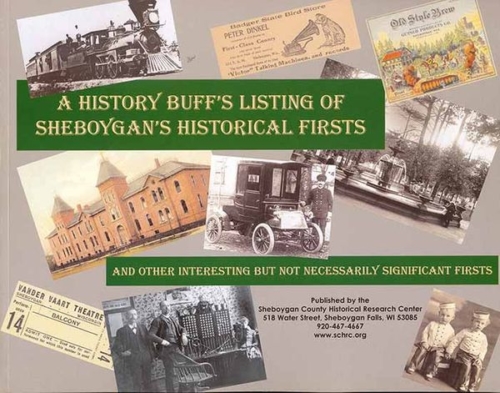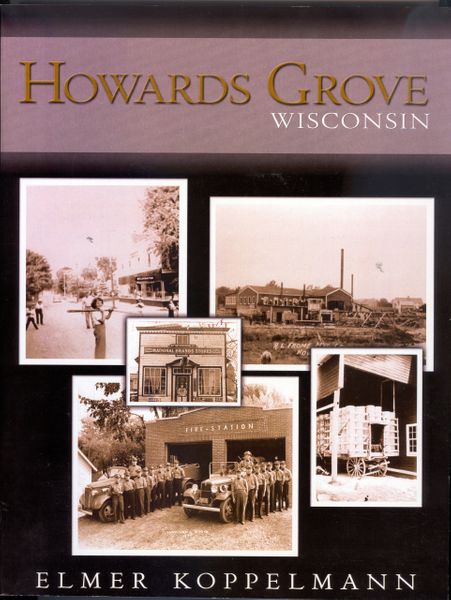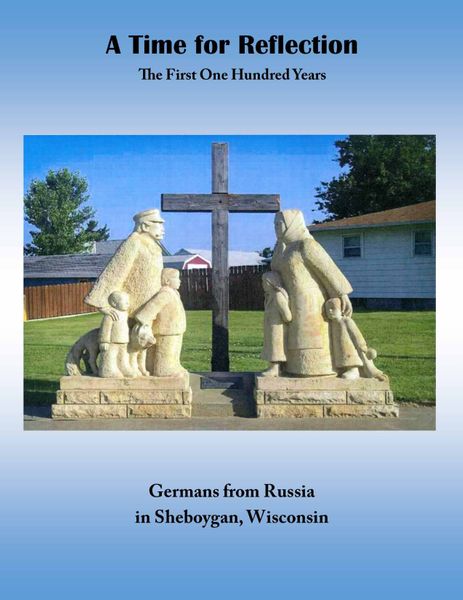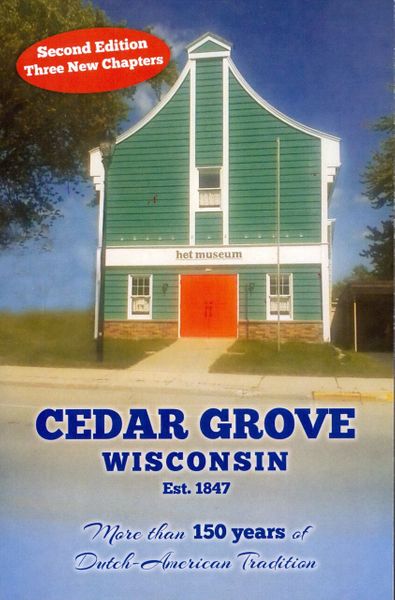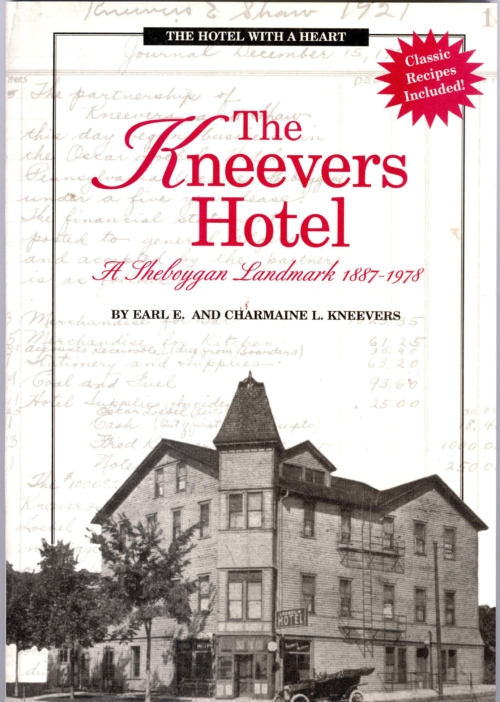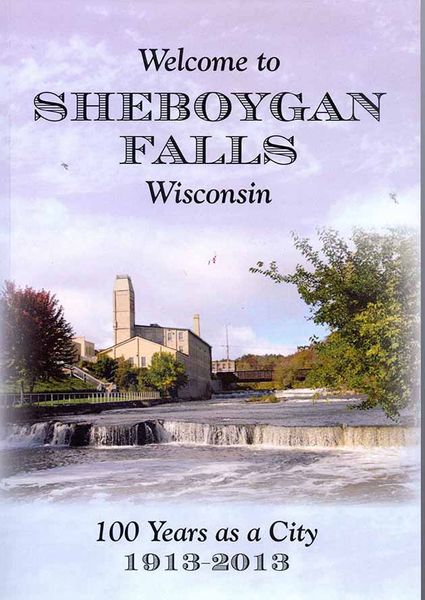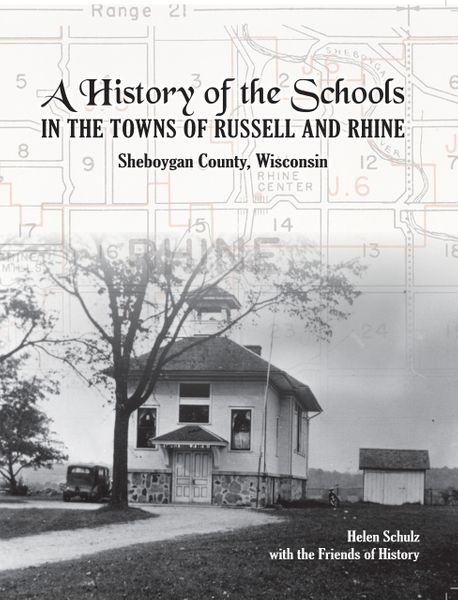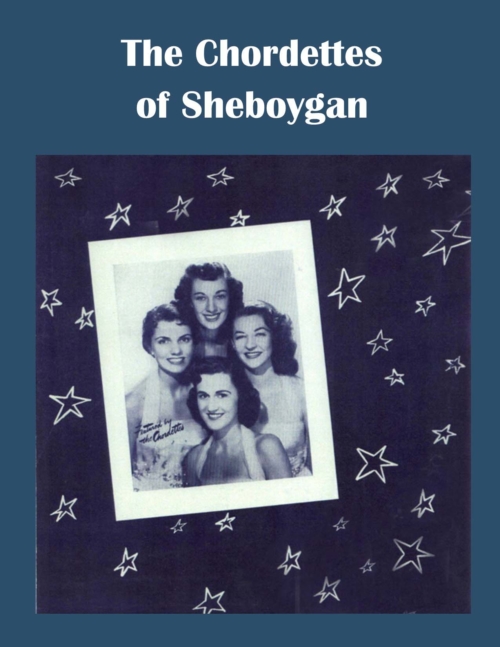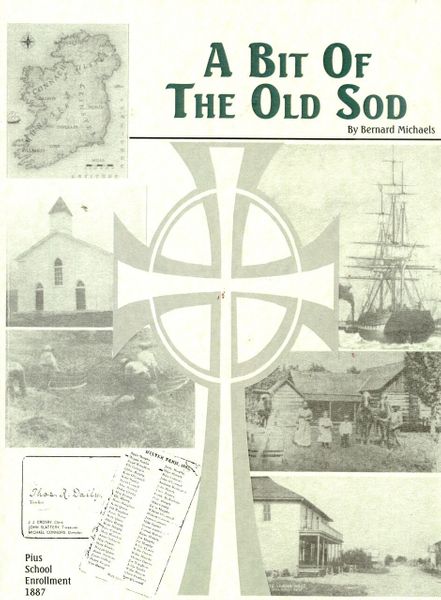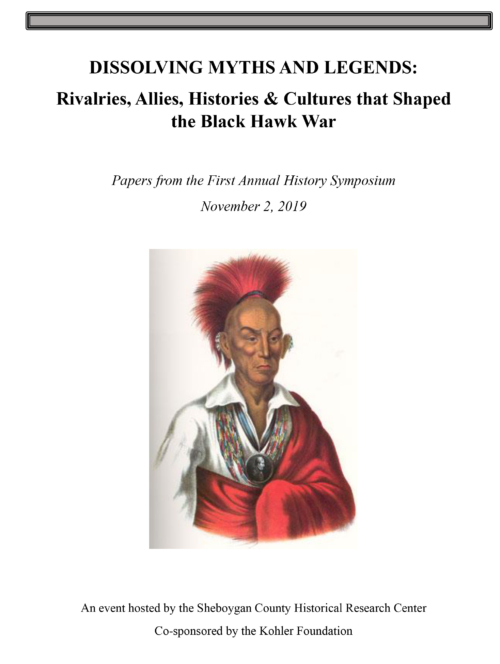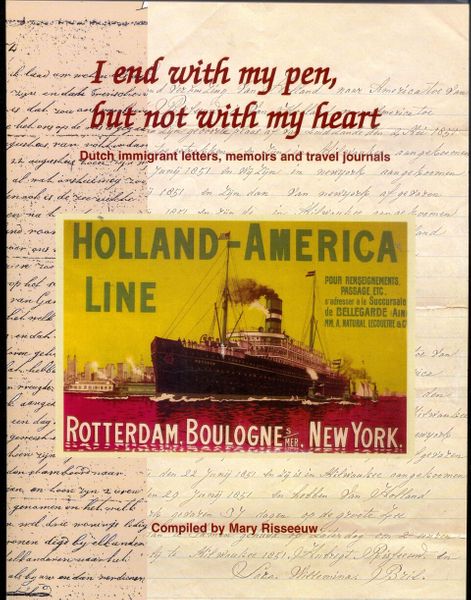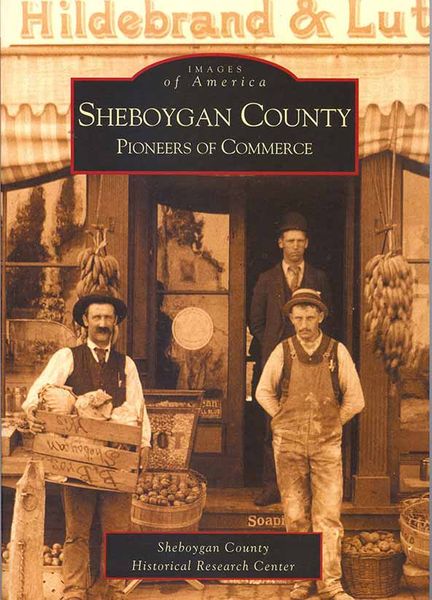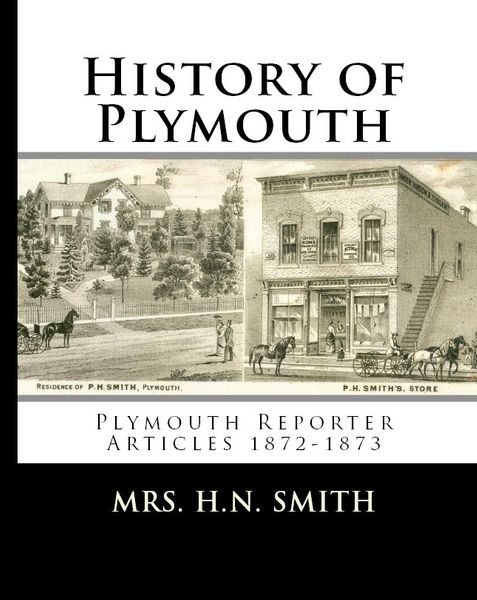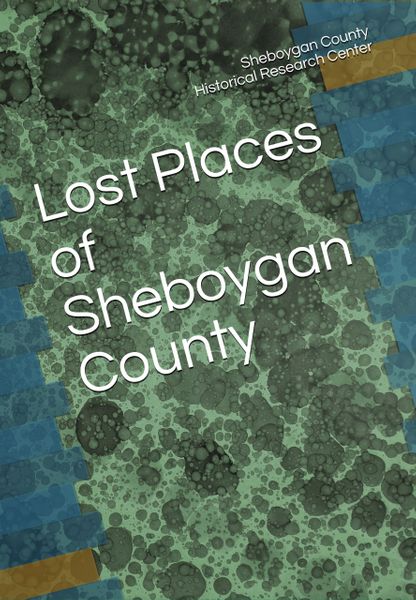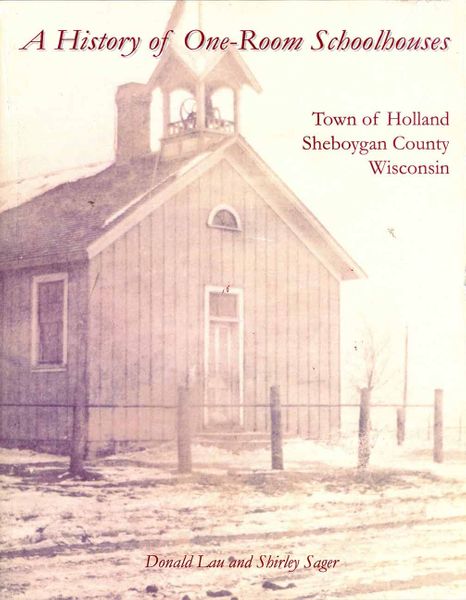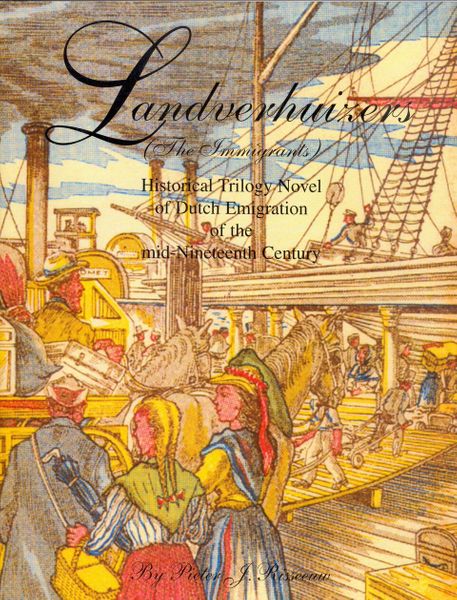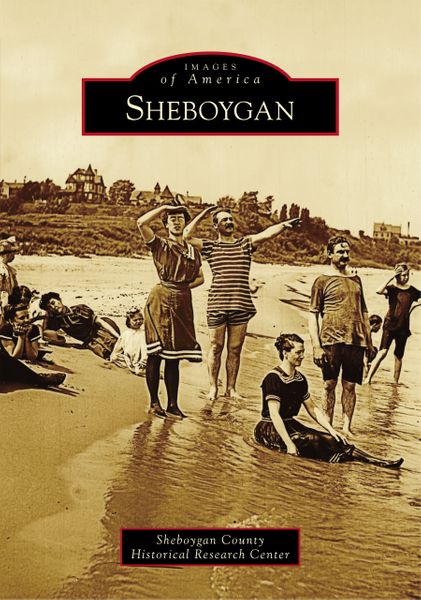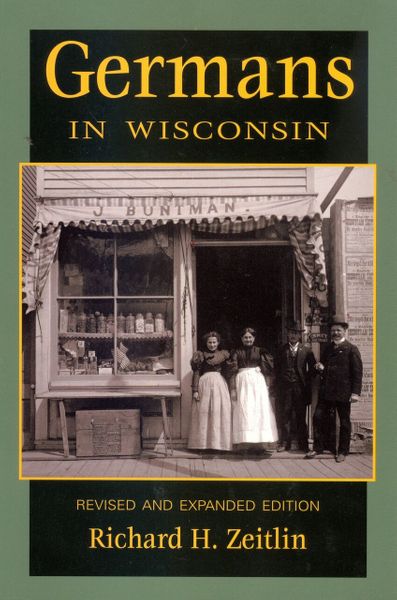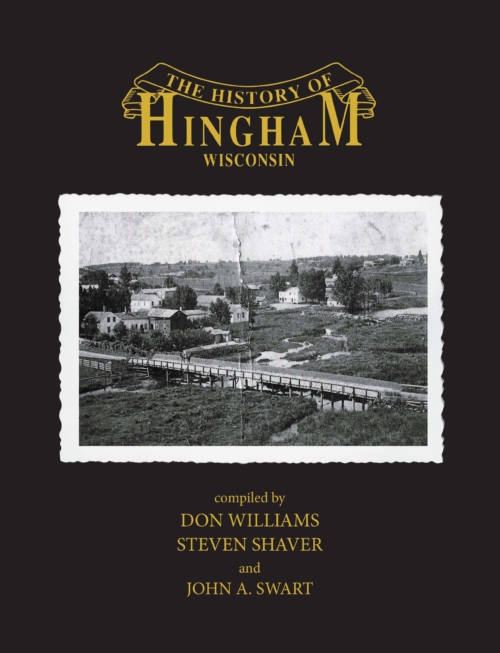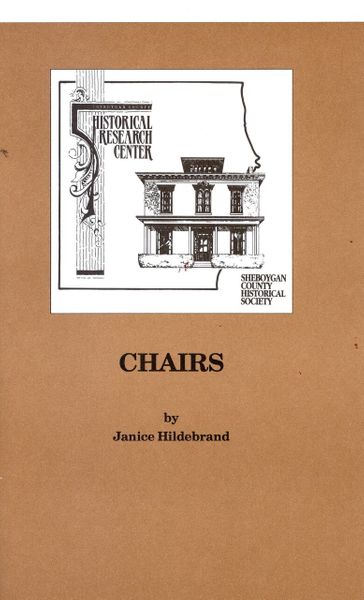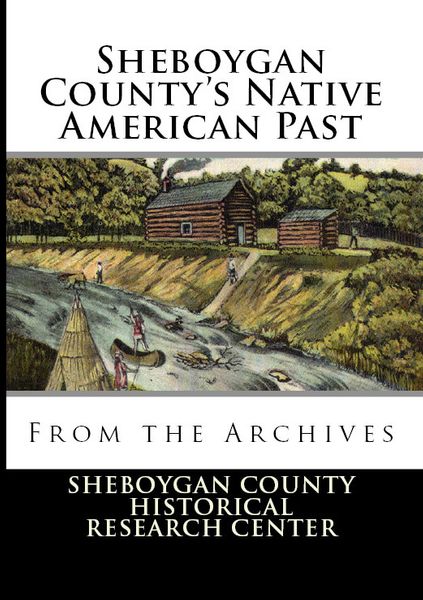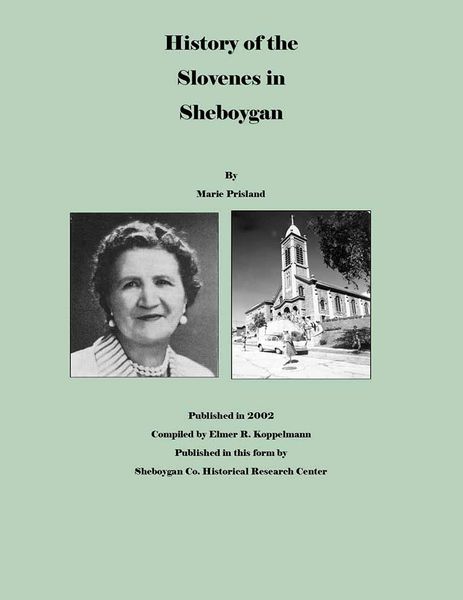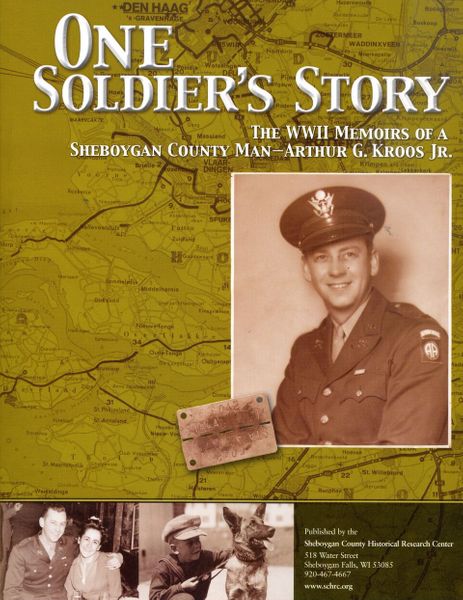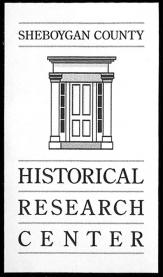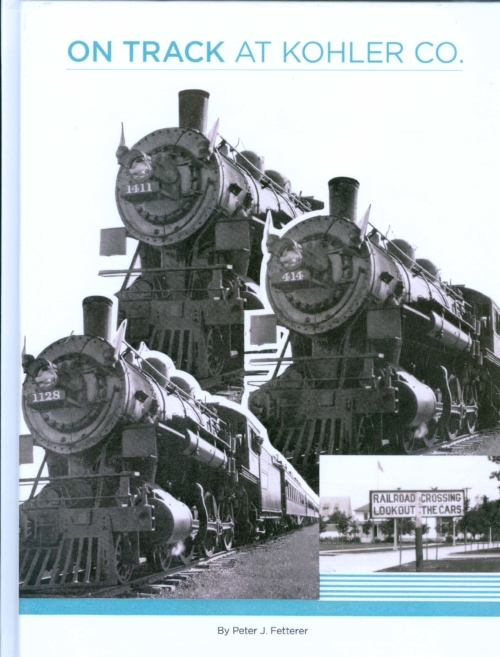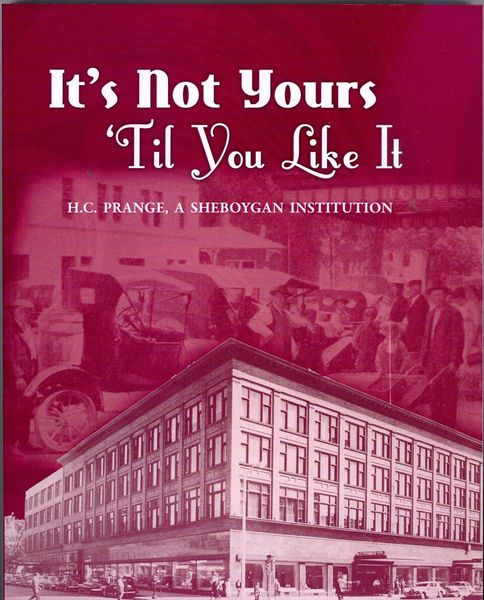-
By Robert Spatt. The City of Sheboygan has many interesting and important "Firsts". This book documents many of those items. There is bound to be a chapter for every interest and although residents of Sheboygan will know many of these firsts, there are a lot of surprises. Some of the firsts are obscure such as the first bratwurst stand, the first department store, the first female principal of a school, the first baby born in Sheboygan; Others, such as the city founder, Farnsworth, and many of the sporting events, maybe remembered by many. The final chapter is entitled “Et Cetera.” Here are little known firsts that don’t fit into any category – Peter Dinkel and his canaries, Clemens Reiss the first to cross the city’s new Eighth Street Bridge in 1923, the street sprinkler who sprayed water on the dusty dirt streets and other obscure first facts. A book to pick up and read a chapter at a time then casually sprinkle conversations with a “did you know that….”
-
By Elmer Koppelmann The village of Howards Grove began as two separate villages, Howards Grove and Millersville. Not until 1967 did the two unite into one incorporated village. The first European settlers to settle in the town of Herman (originally named Howard) were the "Lippers"- a group of 13 families and seven orphaned young people from Lippe-Detmold, Germany. The year was 1846, and the group's leader was Friedrich Reineking. They settled on the land that is now Lakeland College. This volume brings the history of the area back to life, and documents the families and businesses that, today, make up Howards Grove.
-
Out of Stock
By Peter Laun and the Elkhart Lake Historic Race Circuits Preservation Society.
After WWII, open road racing gained popularity all over the United States due to the influx of European sports cars purchased by American veterans who had experienced the thrill of road racing overseas. The driving force behind the growth of the sport in America and the main organizer of these races was The Sports Car Club of America (SCCA). A Midwest course was deemed necessary for racers, and Elkhart Lake, Wisconsin was chosen as the site. In 1949 the Milwaukee chapter of the SCCA and the Chamber of Commerce of the Village of Elkhart Lake planned the first road race at Elkhart Lake, scheduled for July of 1950. These open road races lasted from 1950-1952, when they were deemed too dangerous for spectators and drivers.
-
A Time for Reflection 1892-1992 This booklet was prepared for a centennial celebration of the arrival of the first Volga Germans in Sheboygan, Wisconsin. That small group of seven, unsure of their destination or what they would do when they arrived, was followed by many other relatives and friends. Today, thousands of people who live in Sheboygan - or who lived there at one time - are descendants of German Russian immigrants. “A Time for Reflection” is our anniversary theme, for now is an appropriate time to reflect on our ancestors’ lives and to count the many blessings we have received as a result of their courage and sacrifice. With a new government in power, many Russian people of German descent will be searching for relatives and acquaintances in the West. Many Americans, too, want to be reunited with lost kin. We want to be ready to help each other. The history, chronology, and maps in this booklet represent only a small part of our unique heritage. Here is a brief look at the Volga Deitsch, how they got to Russia and why they came to America, and then to Sheboygan. It is a tale of more than 200 years of travel, hardship and joy endured by our ancestors. Older generations might recall the good times as well as the not-so-good when they read about old customs and practices. Younger people may learn a history they did not know existed. This 2016 update adds extra photos and more history.
-
by Peter Fetterer
The railroads of Sheboygan County have left behind a legacy of stories … some tragic, some humorous, and some almost unbelievable. The stories bear testimony to the men and women who worked on the early rail lines that served the county … the engineers, firemen, brakemen and conductors who ran the trains … the shop men and track gangs who kept them running … the station agents, freight handlers and railroad officials supporting the operations, and the passengers and hobos who rode the rails.
The railroaders working these lines for nearly 150 years and the passengers riding their trains have been an integral part of our history. These are some of their stories … tales from the rails of Sheboygan County.
-
By Denny Moyer
This short book outlines the 100 year history of Baseball in Sheboygan, Wisconsin. Sheboygan's colorful history began with the Elwell Boys sponsored by Elwell Flour Mill and chronicles the many teams up to the present Sheboygan A's.
-
“Cedar Grove, Wisconsin, 150 Years of Dutch-American Tradition,” has been updated and reprinted. Three new chapters entitled, “Historical Update, Old News and The Royal Visit” have been added. The new publication will be available for sale at a discounted price during the festival at the following locations: Holland Festival Souvenir Stand, Het Museum, Te Ronde House Museum, Oma’s on Main Restaurant, Cedar Grove Library and the Union Dollar General Store.
-
By Bernard Michaels A story of the settlement of the northern Kettle Moraine in Sheboygan County, Wisconsin focusing on the town of Mitchell.
-
By the Howards Grove Area Historical Research Committee The settlement of Haven, located in the Town of Mosel on the western shore of Lake Michigan, Sheboygan County, was formerly known as Seven Mile Creek, not Seven Creeks, as has been recorded in a newspaper account of the area’s history. It got its name from a small creek which flowed into Lake Michigan about seven miles north of Sheboygan. The first post office in Haven was established on July 16, 1897. The first postmaster in Haven was Frederick W. Franzmeier. In 1897 Frederick and Herman Franzmeier built a rooming house, tavern and store next to the railroad tracks. In 1903 the post office was established in that building.
-
Sale!This is a reprint and update of the 1976 book done for the Bicentennial. This book was done in conjunction with the 100th anniversary of Falls becoming a city. Trace the evolution of the business district and learn about the wide variety of civic groups which once kept citizens busy. See how the fire department has grown and take a peek at the folks who settled Falls
-
Sale!This book takes us back through the history of education in the northwest corner of Sheboygan County. Starting both sections with a history of the named township, this team of writers takes us from the early settling of the area to the recent consolidations. Each school is looked at in detail and the many pictures of facilities, classes and notable events take the reader on an enjoyable journey through the past. Also included are a comprehensive index, 1889 plat map, master plan for education in Sheboygan County and biographies of Ray B. Lightfoot, Violet R. Littlefield and Doris G. Phipps. Schools covered: Russell, Taft, Garfield, Little Elkhart Lake, Joliet, Elkhart Lake, Harrison, Dewey, Lime Ridge, Rhine Center and Victory. Originally published in 1997, this reprint contains updates and improved imaging.
-
Rebuilding a Railroad in the 21st Century: Sheboygan County, Wisconsin, documents the rebuilding of an 11-mile rail line in Sheboygan County, after being dormant for nearly 30 years. This was more than just a fix-it-up job, but the replacement of the entire line from the ground up with new track built to modern standards to handle heavy loads. It also required one trestle to be completely replaced and others reinforced. Adding to the generous amount of photos, there are “before” and “after” photos taken at dozens of locations, and it won’t seem possible that these photos were taken at the same location. Also included is the history of this line from the pre-civil war era to current times. Old rail dating back over 150 years was found and included is the story that these old rails tell.
-
By Bernard Michaels
The poignant story of immigration and settlement of the Irish in Sheboygan County, this book gives an account of the Byron-Lima Settlement, a span of some thirty miles in which over 600 Irish families settled. The community's irregular borders ran from Kennedy's Corners in Lima to the frame church of Byron's St. John. The town of Mitchell, Sheboygan County is at the heart of this story.
-
Sale!By Edwin L. Fisher Because of the prominence and close connection by virtue of the Sheboygan County Historical Society occupation of his 1852 mansion, it was thought more should be known about Judge David Taylor and his family. As a Wisconsin State Supreme Court Justice, he was one of the most important early settlers in Sheboygan, Wisconsin. As research proceeded so much interesting family-related information became available that the story expanded.
-
By Gustave Buchen
Considered the quintessential book on Sheboygan County history, this volume by Gustave Buchen, was written in 1944, when many of the original settlers were still alive. The information is well documented and tells the story of Sheboygan County's first years. The book includes an index, maps of early Sheboygan County and drawings. 2015 Reprint.
-
By Mary Risseeuw
These letters, memoirs and travel journals span a hundred year period (1847-1959) and offer a fascinating view into the lives of the immigrants and their families. Some provide remarkable detail about their journey to America and their struggles to establish a new life. Others offer little beyond the basics: weather, health, crops, births and deaths. Most are grateful for the blessings of God and the fact that they are still ‘fresh and healthy’ (alive and well, in more modern terms!). The criterion for selecting the contents of this book was to present an overview of different settlements in Wisconsin and to provide a glimpse into the differences and similarities between the various immigration waves. There are vivid tales of crossing the Atlantic Ocean and personal glimpses into the Civil War, World War I and World War
-
Sheboygan County's iron-fisted work ethic began with its earliest residents. From the jackknife trading posts and mill wrights of the early 1800s to the spas and "Great Wall of China" of Kohler Company, the importance of commerce to Sheboygan County is evident. This wonderful pictorial history of the small family-owned business of Sheboygan County begins in the 1870s and ends with a great image of a 1950s American Classic-McDonald's Golden Arches.
-
By Laura Chase Smith This history of the township of Plymouth, the Villages of Plymouth and Quitquioc, Sheboygan County, Wisconsin was written by Mrs. H.N. Smith. This series of articles was published in the Plymouth Reporter between December 10th, 1872 and June 5th, 1873. It details the lives of Plymouth’s earliest citizens.
-
Sale!By Don Lau This book documents the growth of education in the City of Sheboygan. Did you know that Sheboygan had a Day School for the Deaf, A Fresh Air School- Tuberculosis- as part of the Third Ward School and was the first home of Lakeshore Technical College? Dozens of photos.
-
The story of the Milwaukee Northern . . . Sheboygan's interurban link to the rest of the world by Peter Fetterer. Available by about November 30, 2018.
-
Sale!Though we have nothing as dramatic as Pompeii, Mesa Verde or Petra, we, too, have lost settlements. Our lost settlements like Hoard, New Paris, Bear Lake, Gooseville and Hull’s Crossing are lost places of Sheboygan County- communities that were, for a short time, vibrant and busy, but fell into decline and disappeared except for the occasional mention on an old Sheboygan County map.We’ll take a trip back to reconnect with many of our local mysteries.Available about December 6, 2018.
-
Sale!By Don Lau and Shirley Sager The schools covered in this book include Jefferson, South Cedar Grove, West Oostburg, Beaver Creek, Maple Grove, Fairview, Greene, Amsterdam, River Valley, West Cedar Grove, Liberty, Lakeview and Hoard.
-
By Oostburg Historical Society Hundreds of photos of the village of Oostburg. Designed as a companion book to Oostburg, Haven of Hope.
-
Since 1953, August brings Bratwurst Day, a celebration of sausage and of our collective German heritage. The brat is a social food in Wisconsin where Germans first introduced it to the New World. We have brat fries on weekends like folks have BBQs in the south and Chicago has its deep dish pizza. It is part of a deep food tradition. Few things identify one’s German heritage more than making sausage. Sausage was a means of survival for our German ancestors during the winter months, as well as a way to use precious meat scraps and pay homage to their porcine good luck charm. This book documents the long and varied history of some of Sheboygan's nearly forty meat markets and sausage producers. We’ll revisit sausage-making in the county and remember the heyday of 1950s Bratwurst Days.
-
Sale!
By Pieter J. Risseeuw
A historical novel, originally published as a trilogy, of Dutch immigration of the mid-nineteenth century. This English translation is made available for the first time by permission of the original publisher and supported by Netherland-America Foundation of New York. Originally published in Dutch in 1947, the novel discusses the trials and tribulations of immigration and the establishment of the Dutch churches and colonies in Iowa and Michigan.
-
Sale!Situated on the picturesque western shore of Lake Michigan, is a city of contrasts and conundrums. It is a modern city facing all the challenges of today’s world, ready and willing to transition into the future. But, at the same time it is a city comfortable with long-established customs struggling to keep the time-honored traditions which have made it a great place to live. It is a place where people stay on the same bowling teams for decades, where churches are always full and focused on the community and where everybody knows everybody else in the local taverns. Chapters included in this book include: Blazing Trails; The First Fifty Years; Saloons and Public Houses; Railroads Bring Prosperity; Riding the Trolley; Eighth Street- The Heart of Sheboygan; and Parades, Festivals and Events.
-
By Richard Zeitlin Between 1820 and 1910 nearly five and a half million German immigrants came to the United States. Most settled in the Midwest and many came to Wisconsin. Learn about the values and the Germans brought with them from the Old Country.
-
Sheboygan, Wisconsin, known for years as "Chair City" has been home to such companies as Phoenix Chair, Northern Furniture Company, Mattoon, Crocker Chair, Bemis-Riddell, Thonet, R-Way and more. This book traces the history of furniture making in Sheboygan County from the mid-1800s to present day companies.
-
By Peter Laun
Elkhart Lake, Wisconsin, home to Road America today, was once a summer vacation retreat to thousands of city dwellers from Chicago, Milwaukee and St. Louis. The trains and interurban brought them to enjoy the cool breezes and waters of Elkhart Lake, Crystal Lake and Little Elkhart Lake. This volume discusses Joseph Moore, the founder and many other colorful characters of the village. It reminds us of Villa Gottfried, the Schwartz Hotel, Siebken's, Pine Point, Osthoff and Camp Brosius. Photos accompany each story.
-
Sale!
Sheboygan County has a rich and varied Native America past. When the first Europeans arrived, there were probably only about a thousand Indians permanently residing in Sheboygan County, perhaps another thousand during the fishing season on Lake Michigan.
These Indians had relinquished their title to the land by various treaties made with the United States, from 1831 to 1833, but remained here for a number of years until they gradually moved to other locales, as their former hunting and fishing territories disappeared.
What is known of the Indians of Sheboygan County comes mostly from the perspective of white settlers. The Native Americans neither kept nor left any written records; they had no written language forms. What is known of their manner of life, their history and traditions, has come down to us in their myths and legends, through archeological remains, and in the accounts of explorers, missionaries, traders and early settlers. The records of even their white observers are scattered and scanty. They are mainly recitals of their own activities, their references to the Indians usually being only incidental. Much valuable information concerning the life and characteristics of the Indians has been obliterated, although some remains.
This book will share a sampling of the written information gleaned from the archives of the Sheboygan County Historical Research Center.
-
The cheese industry has been very important to Sheboygan County, Wisconsin since the 1870s. This is a history of the industry in the county. It is divided by townships and lists some 210 different factories that existed over time. It deals with cheese making in the home, the development of cheese factories, factories and their locations, cheese makers, the cheese making season, tools and equipment, the growth of the industry, cheese exchanges, types of cheese and much more
-
Sale!
By Marie Prisland
This is a reprinting of 23 February 1945 Sheboygan Press article by Ms. Marie Prisland. Marie Prisland was born Marie Cerne in Recica, Slovenia, Austria and came to the United States in 1906 when she was 15 years old. On February 24, 1908 she married John Prisland in Sheboygan, Wisconsin. In 1945 she wrote her history of the Slovenians in Sheboygan which was published in the Sheboygan Press and Wisconsin Magazine of History published by the State Historical Society of Wisconsin. She researched Slovenian history and migration for over forty years.
-
Sale!By Bill Wangemann Mr. Wangemann began writing a weekly column for The Sheboygan Press in January of 2003 to help celebrate Sheboygan’s Sesquicentennial. Contained within this book are all 52 of the columns Bill wrote for the Press. Down By Prange’s brings readers a simpler slice of life. Wangemann paints a realistic picture of Sheboygan’s past, the good and the bad, and you are guaranteed to learn something about old Sheboygan by paging through this collection of columns.
-
Sale!By Arthur G. Kroos, Jr This is the story of one Sheboygan County soldier, Arthur G. Kroos, Jr., from his enlistment in Company F, 127th Regiment, 32nd Division in the fall of 1940, until release in 1945. Mr. Kroos was chosen to serve a stint as Aide-de-Camp to General Matthew Ridgway. He was trained as a paratrooper seeing service in Northern Ireland, North Africa, Sicily, Italy and on D-Day in France. His final military foray took place in a glider as part of Operation Market-Garden. He was shot down over the Dutch island of Schouwen and spent eight months as a POW at Luft Stalag 1 in Barth, Germany. This book contains his own diary from Luft Stalag 1 and entries from a scrapbook created by his wife, Patty. This is not your average WWII story. It is local history at its best.
-
By John Textor This is the story of the November 1847 sinking of the propeller ship, Phoenix, from a new perspective. Most of the fatalities were of new Dutch immigrants and this book tells of how life might have been different had the catastrophe not happened.
-
Mention the name Prange’s and no matter your age from 40 to 90 you probably have personal memories of the legendary Sheboygan department store. Whether those memories are of the annual animated Christmas window displays and caramel corn, the use of due bills, charge-a-plates, layaways, will-call, the x-ray machine in the shoe department or the escalators, they are shared by many and are part of the cherished collective history of the H.C. Prange Company. This publication is by no means a comprehensive history of the H.C. Prange Company. It is more a trip down memory lane, filled with images, stories and recipes submitted by former employees and loyal shoppers.

